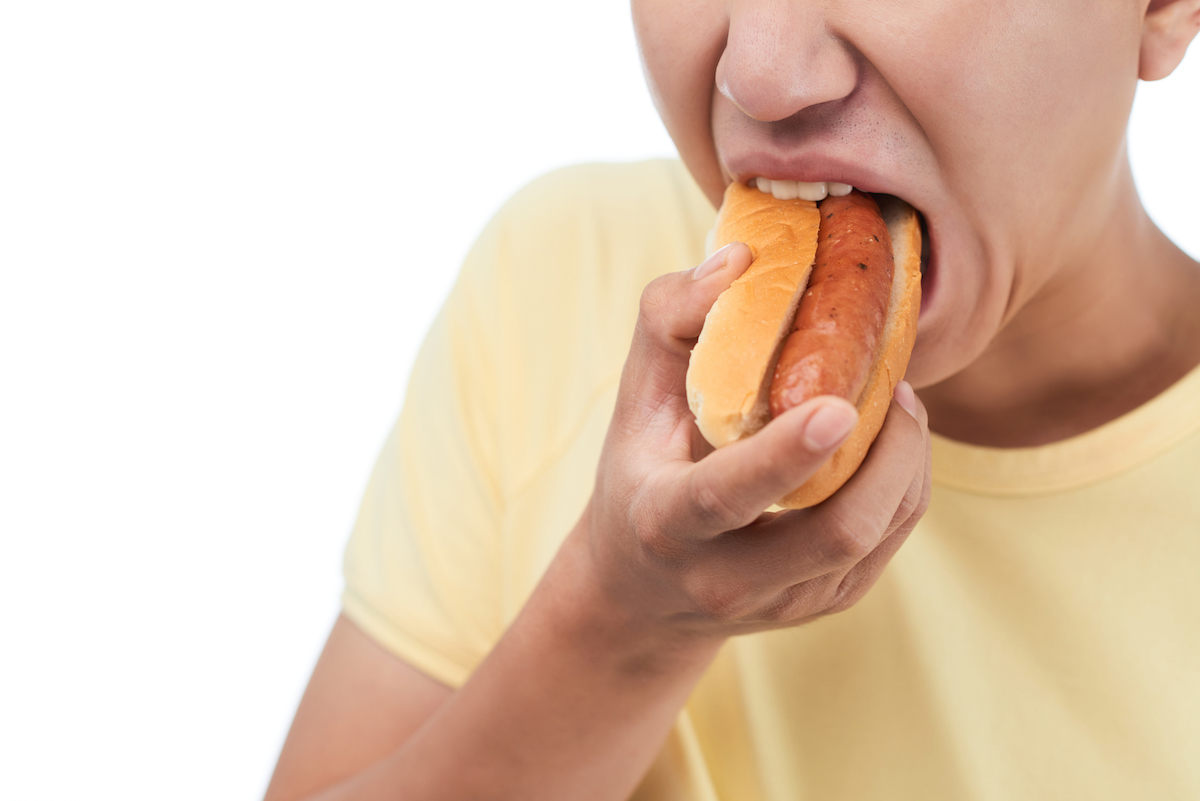<< Back
Inside the Stomach of a Hot Dog Eating Contest Winner

July 13, 2021
Nathan’s Famous International Hot Dog Eating Contest is almost as old as the hot dog. But not since the competition began in 1916 had anyone devoured 76 dogs and buns in 10 minutes until Joey Chestnut accomplished the stomach-stretching, world-record feat July 4 on Coney Island in New York.
Chestnut won his 14th Mustard Belt, and the $10,000 prize money, but it didn’t impress Dr. Devika Umashanker, Hartford HealthCare’s System Medical Director of Medical Weight Loss.
“I just nod my head in disappointment,” she says. “I understand the social aspect of it when people have these type of food festivals and have these contests. But as a clinician, I always wonder why.”
The rest of us likely wonder “how.” Several years ago, University of Pennsylvania doctors devised an experiment for a National Geographic special, the results later published in the Journal of Roentgenology, that compared the stomach of a champion competitive eater with the stomach of someone who merely had a “healthy appetite.” The two men were asked to consume all the hot dogs they could in 12 minutes.
The competitive eater’s stomach, the researchers noted, was distinctly different — “a massive distended, food-filled sac occupying most of the upper abdomen.” It showed “little or no gastric peristalsis,” the squeezing motion that helps break down food.
A normal human stomach, about the size of a small football, expands maybe 15 percent. A competitive eater’s stomach expands two or three times its normal size. How? By training and overcoming the satiety reflex, the phenomenon that uses neural pathways in the brain to inform the stomach that it’s full. (Its most obvious response causes people to vomit.)
“There’s so much to be learned,” says Dr. Umashanker, “about hormonal processes that are produced not only from the stomach, but also from the small intestines and large intestines, that impacts levels of satiety, the levels of fullness.”
Competitive eaters might not qualify as athletes in the purest sense, but they still train with the sole goal of expanding their stomach. Takeru Kobayashi, a six-time Nathan’s champion, expands his stomach with water. So does Matt Stonie, who upset Chestnut in the 2015 Nathan’s contest by eating 62 hot dogs. But a week later, he ate 200 chicken wings as part of his training for an upcoming wing-eating contest. He once drank a gallon of Gatorade on 37 second. Chestnut has been known to train for a contest by eating 420 hot dogs in a month.
Like conventional athletes, though, competitive eaters can experience physical and health issues. Kobayashi’s career almost ended, at 29 years old, because of an arthritic jaw. Repeated binges can cause gastric ruptures or seizures caused by low sodium levels. The University of Pennsylvania researchers described competitive eating as self-destructive, risking “morbid obesity, profound gastroparesis, intractable nausea and vomiting and even the need for a gastrectomy.”
Even a sleeve gastrectomy, which removes 80 percent of the stomach, sometimes can’t stop weight gain.
“I’ve seen patients with a sleeve gastrectomy who have regained 100 pounds of weight loss they had achieved,” says Dr. Umashanker. “They’ve gone back to the bariatric surgeons and when they do the imaging to see of their stomach has expanded, the answer is no.”